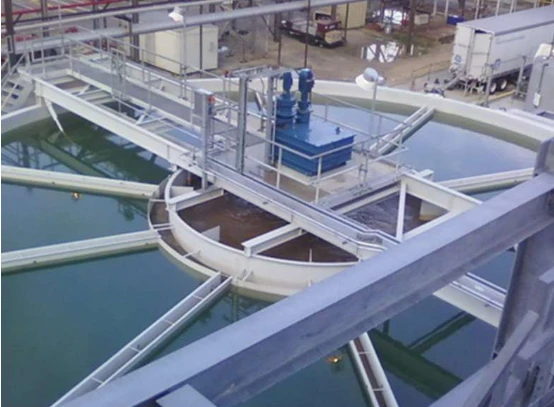
-
 Afrikaans
Afrikaans -
 Albanian
Albanian -
 Amharic
Amharic -
 Arabic
Arabic -
 Armenian
Armenian -
 Azerbaijani
Azerbaijani -
 Basque
Basque -
 Belarusian
Belarusian -
 Bengali
Bengali -
 Bosnian
Bosnian -
 Bulgarian
Bulgarian -
 Catalan
Catalan -
 Cebuano
Cebuano -
 China
China -
 China (Taiwan)
China (Taiwan) -
 Corsican
Corsican -
 Croatian
Croatian -
 Czech
Czech -
 Danish
Danish -
 Dutch
Dutch -
 English
English -
 Esperanto
Esperanto -
 Estonian
Estonian -
 Finnish
Finnish -
 French
French -
 Frisian
Frisian -
 Galician
Galician -
 Georgian
Georgian -
 German
German -
 Greek
Greek -
 Gujarati
Gujarati -
 Haitian Creole
Haitian Creole -
 hausa
hausa -
 hawaiian
hawaiian -
 Hebrew
Hebrew -
 Hindi
Hindi -
 Miao
Miao -
 Hungarian
Hungarian -
 Icelandic
Icelandic -
 igbo
igbo -
 Indonesian
Indonesian -
 irish
irish -
 Italian
Italian -
 Japanese
Japanese -
 Javanese
Javanese -
 Kannada
Kannada -
 kazakh
kazakh -
 Khmer
Khmer -
 Rwandese
Rwandese -
 Korean
Korean -
 Kurdish
Kurdish -
 Kyrgyz
Kyrgyz -
 Lao
Lao -
 Latin
Latin -
 Latvian
Latvian -
 Lithuanian
Lithuanian -
 Luxembourgish
Luxembourgish -
 Macedonian
Macedonian -
 Malgashi
Malgashi -
 Malay
Malay -
 Malayalam
Malayalam -
 Maltese
Maltese -
 Maori
Maori -
 Marathi
Marathi -
 Mongolian
Mongolian -
 Myanmar
Myanmar -
 Nepali
Nepali -
 Norwegian
Norwegian -
 Norwegian
Norwegian -
 Occitan
Occitan -
 Pashto
Pashto -
 Persian
Persian -
 Polish
Polish -
 Portuguese
Portuguese -
 Punjabi
Punjabi -
 Romanian
Romanian -
 Russian
Russian -
 Samoan
Samoan -
 Scottish Gaelic
Scottish Gaelic -
 Serbian
Serbian -
 Sesotho
Sesotho -
 Shona
Shona -
 Sindhi
Sindhi -
 Sinhala
Sinhala -
 Slovak
Slovak -
 Slovenian
Slovenian -
 Somali
Somali -
 Spanish
Spanish -
 Sundanese
Sundanese -
 Swahili
Swahili -
 Swedish
Swedish -
 Tagalog
Tagalog -
 Tajik
Tajik -
 Tamil
Tamil -
 Tatar
Tatar -
 Telugu
Telugu -
 Thai
Thai -
 Turkish
Turkish -
 Turkmen
Turkmen -
 Ukrainian
Ukrainian -
 Urdu
Urdu -
 Uighur
Uighur -
 Uzbek
Uzbek -
 Vietnamese
Vietnamese -
 Welsh
Welsh -
 Bantu
Bantu -
 Yiddish
Yiddish -
 Yoruba
Yoruba -
 Zulu
Zulu
Exploring Limestone Formations Through Advanced Drilling Techniques and Methods for Resource Assessment
Drilling into Limestone Formations for Exploration
Limestone formations, characterized by their sedimentary nature predominantly composed of calcium carbonate, represent significant geological structures that play a critical role in various exploration activities, including hydrocarbon extraction, mineral mining, and groundwater management. The process of drilling into limestone is a complex yet vital aspect of resource exploration, as it aids in the assessment of subsurface conditions and the potential yield of the desired resources.
Limestone is widely distributed and is often found in regions that have undergone various geological processes over millions of years. These formations can contain significant deposits of oil and natural gas, as well as important minerals such as gypsum and calcite. Additionally, limestone's porosity and permeability can create conducive environments for groundwater aquifers, making drilling into these formations essential for both environmental assessments and resource extraction.
The drilling process itself involves several stages, each requiring careful planning and execution. Initially, geologists conduct thorough geological surveys to identify promising limestone formations. These surveys utilize various techniques, including seismic reflection, magnetic surveys, and geochemical analyses, to determine the most favorable locations for drilling. By understanding the geological history and structure of the limestone, geologists can accurately predict the potential for resource deposits.
Once a suitable site has been identified, site preparation begins. This stage includes clearing the area, ensuring environmental safeguards are in place, and establishing the necessary infrastructure, such as access roads and drilling pads. The choice of drilling technology is critical and depends on the depth of the target formation, the hardness of the limestone, and the specific objectives of the exploration. Common drilling methods used in limestone include rotary drilling and diamond-core drilling, each offering distinct advantages depending on the project's requirements.
drilling into limestone formations for exploration and

During the drilling process, drill bits are used to penetrate the limestone surface, and cuttings are collected for analysis. Through this analysis, geologists can obtain valuable information regarding the mineral composition, structural integrity, and overall viability of the formation. Monitoring drilling parameters such as weight on bit, rotation speed, and mud circulation is essential to optimize the drilling efficiency and minimize potential complications.
One of the significant challenges faced while drilling into limestone is the possibility of encountering features such as karstic formations. Karst landscapes, formed by the dissolution of soluble rocks like limestone, can feature voids or caves that complicate the drilling process. Therefore, an in-depth understanding of the local geology is crucial to mitigate risks and ensure successful drilling operations.
Waste management is another significant aspect of drilling operations. During the drilling process, large quantities of drill cuttings and drilling fluids are generated. Proper disposal and management of these materials are imperative to prevent environmental contamination. In recent years, advances in drilling technology have led to the development of eco-friendly drilling fluids and techniques designed to reduce the environmental impact of exploration activities.
Once drilling is complete, the data collected must be thoroughly analyzed. This analysis typically involves petrophysical evaluations and reservoir modeling, which can reveal the formation's properties and potential yield. If the limestone formation is deemed viable, subsequent steps may include enhanced recovery techniques or further exploration to maximize resource extraction.
In conclusion, drilling into limestone formations is a multifaceted endeavor that requires a blend of geological expertise, engineering acumen, and environmental stewardship. As industries continue to seek new energy sources and mineral deposits, understanding and exploring limestone formations will remain a critical component of resource management and exploration strategies. By leveraging advanced technologies and methodologies, we can ensure that the exploration of limestone formations is both efficient and sustainable, paving the way for future resource development.









